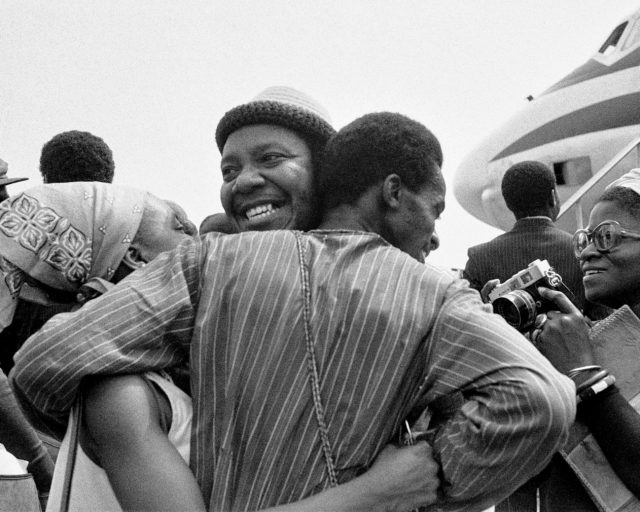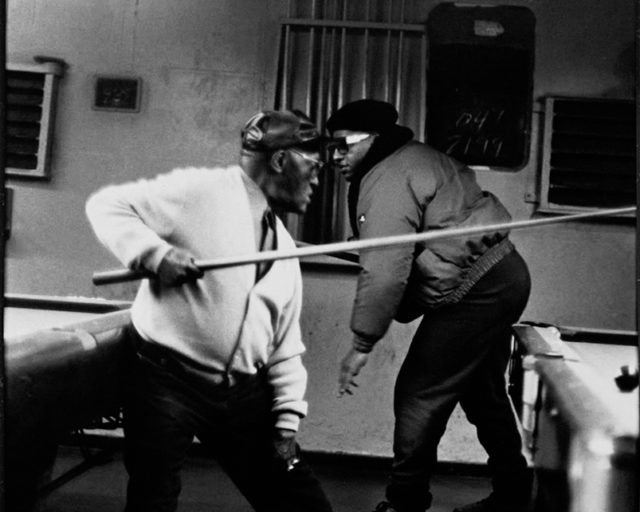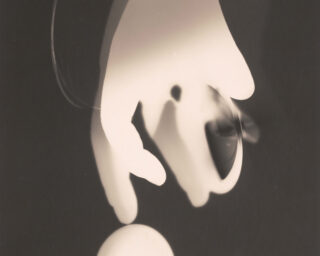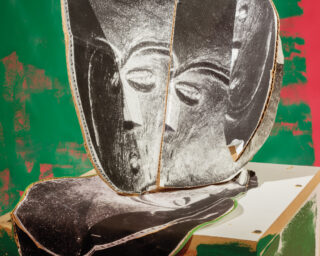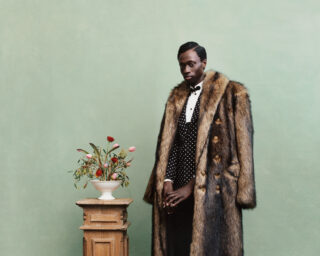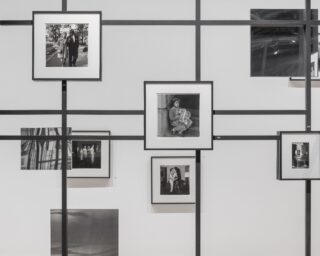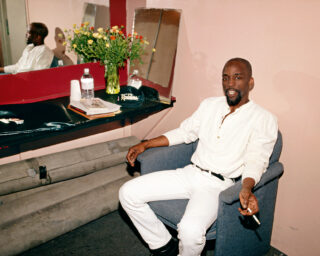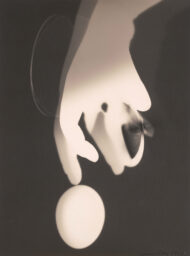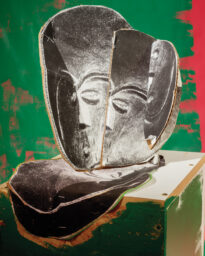Does a Woman Have to Be Invincible?
In her latest exhibition, Phoebe Boswell takes self-portraits—and self-healing—to a new level.
Phoebe Boswell, Still from Rapture (detail), 2018. Single-channel video
Courtesy the artist and Sapar Contemporary, New York
In the contemporary geopolitical West, we are taught that the body should be made invincible. Despite the fact that women’s bodies and women’s psyches remain locations on which patriarchal, political, and economic violence are projected, we rarely hear narratives that are not solely about strength and resilience, negating moments of vulnerability. Fashioning the self as anything less than “strong” is seen as weakness—a personal and moral failing. But what happens if we find such mythologizing, of being so masterfully in command of our bodies, an impossible task—a nontruth that we no longer wish to support?
Kenyan British artist Phoebe Boswell’s recent multimedia exhibition, The Space Between Things, curated by Renée Mussai and organized by Autograph ABP in London, uses a variety of photographic technologies to meditate on that question. Boswell was born in Nairobi to a Kenyan British father and a Kikuyu mother, but spent much of her formative years in the Arabian Gulf, with what she calls an “expatriate” identity. The Space Between Things included minute cutouts of old family pictures in the entryway to the lower-floor gallery, charcoal wall drawings representing an extended portrait of the self—all based on photographs—as well as drawings of nude female figures and roaring oceans on paper. There was also a series of video works that featured multiple-exposure self-portraits of medical scans, some of which give us a perspective of the artist’s body from a distant vantage point, while others probe the interiors of her organs. Each room of the exhibition was accompanied by sound and spoken word; at times, one could hear sound enveloping the space; at others, one needed to step on sound boards—rectangular pedals installed on the floor—to hear Boswell’s voice reciting lines from her own poem.
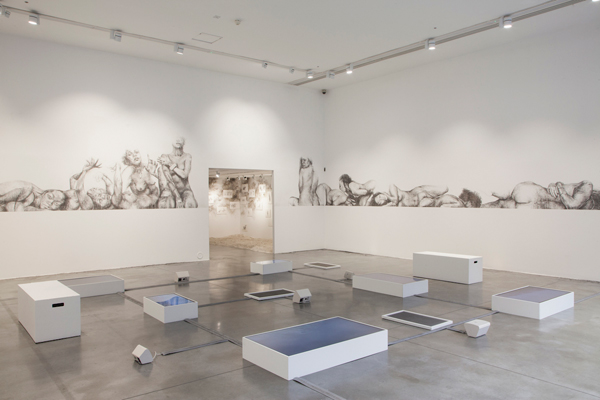
Courtesy Autograph ABP
Accompanying these was a twenty-five-meter-long “extended self-portrait,” powerfully visible on three walls of the ground-floor gallery. These are impressions of her physical and emotional reactions—drawn using soft willow charcoal—based on photographs that the artist took of herself during the three-week process leading up to the exhibition opening. These self-portraits do the opposite of ordinary selfies, so often intended to show us at our finest moments, living our “best lives.” Boswell’s are intimate, self-baring portraits that show her body and flesh sprawled in grief and pain, imperfect and unraveling.
A dramatic series of ruptures in Boswell’s life led to this exhibition, beginning with an accidental injury to her eye. She subsequently experienced an actual heart attack—a physical response to the emotional turbulence she went through as a result of her injury. That wounding, watershed moment forced Boswell to sit meditatively with her physical, psychological, and spiritual self’s vulnerability. How was she supposed to live, now, with a “new” body and an emotional self that could never return to the person she once knew and inhabited? She had to create a dialogue with this new self, “an emotive interrogation of trauma, healing, and the poetics of endurance,” as Mussai writes in the curatorial text; Boswell needed to permit herself to express rage at the cause of the injury that created these ruptures, and give herself moments of longing for return. Between the “before” and “after,” she created a healing, liminal space.

Coutresy the artist and Sapar Contemporary, New York
As she lay in the high-dependency cardiac wing of an East London hospital, “attached to the machine . . . eye bulbous and blurry, delirious,” Boswell remembers hearing the woman in the bed next to hers “calling out to the darkness, ‘Take me to the lighthouse.’” Boswell wondered “where on earth my lighthouse was.” That repeated request—to right one’s vessel in the midst of a storm that could kill, to return to the safety of homeland, guided by a beacon—recalls Virginia Woolf’s 1927 novel To the Lighthouse, known for its fragmented narrative structure and stream-of-consciousness contributions from several narrators. In the book, a family returns to a summer home after a ten-year absence, each carrying with them unresolved longings they’ve borne all their lives—and the hopes of righting their respective courses.
Like Woolf’s narratives, Boswell’s works depict the storms one must brave in order to make a “crossing,” fraught as they always are, to find communion with others. Healing and recovery may be possible if we accept that our longings for an idealized union with our own lighthouses—which call our lost vessels home—will inevitably be marred by imperfections. Boswell, too, had little choice but to acknowledge that she will never be able to “return” in order to remake a perfect, whole person as she remembers herself.

Courtesy the artist and Sapar Contemporary, New York
Boswell’s video installation Ythlaf (2018), composed of six floor-mounted video screens, shows footage of Zanzibar’s shoreline, taken using her father’s drone. Ythlaf, with its beautiful collection of consonants and vowels, is from Old English; it is composed of yth (wave, water), and laf (remnant, relic). “Water-relic” denotes liminal spaces between land and sea, which provide reliquaries for the energy of each wave. Each screen queries the mysteries of ythlaf; we see a shallow shelf of land welcoming each lace-edged wave, and the great expanse of the Indian Ocean beyond. Boswell’s body drifts like that of a long-limbed starfish. At times, the gentle motion of successive waves pitches her off screen. A sound work activated by visitors’ footfalls on interactive pressure sensors, hidden by black floor mats, accompanied the videos, composed of rhythmic breathwork that mimics wave motion. Pedals stood next to each screen; stepping on them released a looped soundscape of spoken word poetry, The Space Between Things (2018), written and recited by Boswell: “Take me to the lighthouse / There is peace there in the space between things / Take me to the lighthouse / I can rage there / In the space between things.”
In the exhibition spaces upstairs at Autograph, Boswell’s works shifted from these intimate portraits to an operating theater, where she underwent surgery to save her right eye: New Moon (2018) presents actual footage from the surgery, bearing witness to the miraculous, meticulous work that modern technology allows medical personnel to carry out, as well as the vulnerability of an organ as delicate as the eye. Also included in these dark, womb-like spaces was an angiogram of her heart, A Broken Heart (2018), which shows us proof of an injury to the organ. At one station, visitors could put on a pair of headphones to hear the voices of the surgeon and nurses who most recently operated on her eye over a period of about two hours, attempting to fortify it using graft cells. (This was the Boswell’s fourth surgery.) Dubstep played in the background, pacing their labor. With these pieces, she illustrates the ways in which the self—both physical and emotional—is made up of, and by, those around us. Just as other people can injure us to the point where we no longer recognize who we are, they also have the capability to help mend us when we are at our most broken.
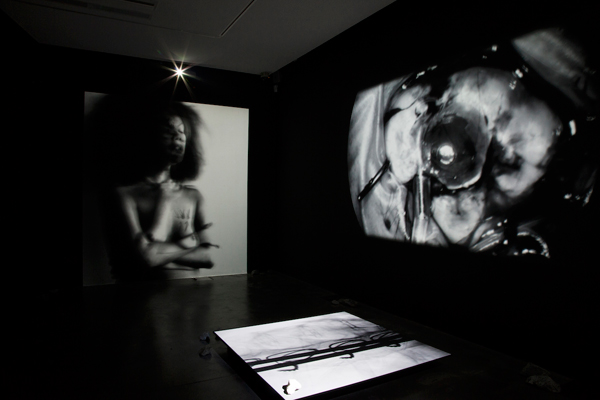
Courtesy Autograph ABP
In the experience of diaspora, we all feel dislocation as we grasp for stability in romantic and sexual attachments, and as we pursue the excellence that one’s community or new country demands, all the while holding together our splintered selves from public view. These tensions in the construction of a diasporic identity are at the heart of Boswell’s practice. Her works unapologetically lay bare the ways in which our psyches fracture and vacillate between a physical world and a world beyond. They portray the poetics of the body’s ability to endure fracturing, without glorifying or essentializing “black women’s strength” or stereotypes about the diasporic subject’s resilience, while also showing a way to speak about our own ruptured selves. Perhaps this can lead us back to our own lighthouses, however fragile and imperfect those journeys may be.
Phoebe Boswell: The Space Between Things was on view at Autograph ABP, London, from December 14, 2018 to March 30, 2019.










